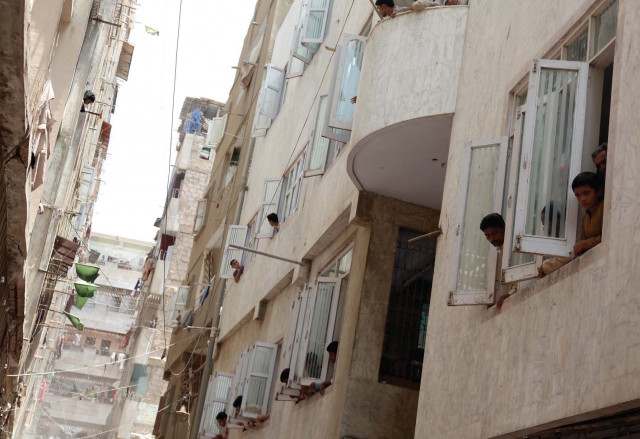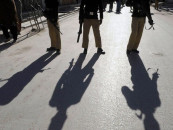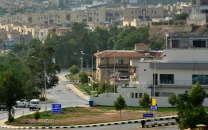With a week of tremors, builders told to be wary of bypassing bylaws
Scrimping on the proper plans happens mostly with private contractors.

Three mild earthquakes have hit Karachi within the past two weeks, prompting building engineers to caution occupants of weak structures already declared dangerous.
Over 150 buildings, most of them located in the old city areas of Kharadar, Mithadar and Lyari risk caving in to even slight jolts as additional floors have been added without the city’s permission.
“An earthquake measuring 2 on the Richter scale is enough to raze most of these buildings,” said Zia Jaffery, an architectural engineer who is part of a committee on dangerous buildings. “Most of these buildings are still standing because of their compacted formation - one supports the other. But such support is not reliable.”
The last earthquake registered 4.7 on the Richter scale and was felt in different parts of the city on Saturday night. There were no reports of ostensible damage.
The committee on dangerous buildings, which advises the Sindh Building Control Authority (SBCA), has been active since a series of collapses in recent years.
Some of these buildings went down because of poor foundations, which gave in as heavy machinery dug into the ground of nearby plots. Other collapsed after the rains and for others it was a case of sewage seeping into the foundation pillars.
According to Jaffery, almost 95 per cent of buildings in the city are not made to withstand earthquakes. “There are just a handful of buildings such as the Habib Bank head office that have been specifically designed to bear severe jolts.”
Over the years, thousands of apartment complexes have sprouted up in the city but it was only five years back that the provision for earthquakes was incorporated in building bylaws, SBCA officials say.
Poor maintenance and faulty constructions have also left buildings dangerous for their occupants. Al Karam Square in Nazimabad, Raza Square in Gulshan-e-Iqbal, Yousuf Plaza and Ayesha Manzil are among the projects in a precarious condition.
The problem with the old buildings, says SCBA official Aqeel Abdi, is that they are owned under the pagri or goodwill system. “These people pay a monthly rent of a few hundred rupees. Most of them do small-time jobs and can’t afford to live anywhere else,” he explains. They cannot be expected to spend huge amounts on renovation and the owner is only interested in spending money when he gets something in return.
The SBCA is overwhelmed. “Every building has a life. And we have hundreds of buildings which were built by the British,” he said. “They have not been kept in their original condition.”
New buildings
Every building plan is approved by the SBCA to ensure that they comply with the bylaws. “But the developer has the responsibility to ensure that after the maps and paperwork are approved, the building is also built according to the original design,” points out structural engineer Arif Qasim, who is also part of the committee.
Architectural and structural engineers are supposed to be on the construction site to ensure that original plans are being followed. “But that is hardly ever the case,” remarked one engineer.
It is common for builders to also restrict the intervention of structural engineers once the plans are approved in order to save money by using less steel, cement and other essential materials.
No worries
It seems the worries are limited to one group in this business. The former chairman of the Association of Builders and Developers, Babar Mirza Chugtai, told The Express Tribune that he thought there was no need to worry about minor earthquakes. “Have you heard anything about any building being damaged by tremors? I don’t think so,” he said.
Karachi is located on a seismic zone but building bylaws have provided for appropriate measures, he said. “Builders have their reputations at stake. They won’t risk it all to save a couple of thousand rupees.”
To make his point, he stressed that the hardest jolts are faced by people living in buildings along the coast, yet there haven’t been any reports of structural damage to them. He did admit, however, that private contractors who construct buildings without official approval on small plots don’t follow the rules.
Published in The Express Tribune, January 16th, 2012.



















COMMENTS
Comments are moderated and generally will be posted if they are on-topic and not abusive.
For more information, please see our Comments FAQ